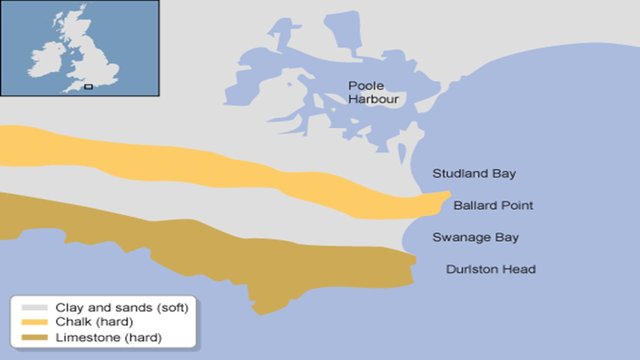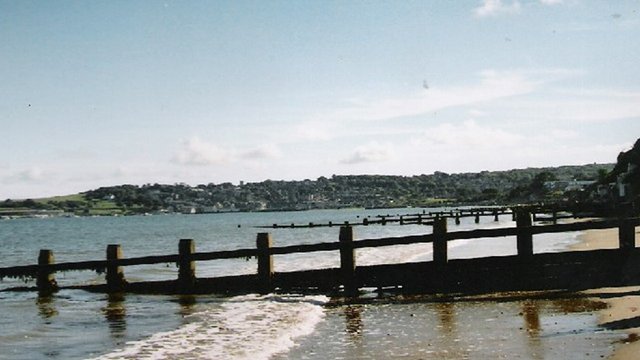
My Geography teacher told my class that we should familiarise ourselves with the south Devon coastline and the different rock types that make up this area of the coast.
This is some of the research I conducted:

(image credit: BBC bitesize)
Displayed in the picture above, features the different rock types that can be found across the south Devon coast.
Where the image shows there is soft rock present, it's more susceptible to coastal erosion.
Where harder rock is present, the longer it takes for the impacts of coastal erosion to show.
This is how bays and headlands begin to form!
Bays are the curvy bits of the coast which form where soft rock has been eroded; pushing the coast further inland.
Headlands are the parts of the coasts that stick out. Headlands form through hard rocks (such as limestone and chalk) refusing to be eroded and pushed back into the land. As the area of coasts, with soft rock, are pushed even further back by erosion, areas of hard rock will not move or erode as quickly. This gives headlands their 'sticky out' feature.
This is a map that I annotated showing you some of the coastal features.

As you may have noticed in the diagram, a few of the areas along the coast have defensive mechanisms called groynes.
Groynes help to reduce coastal erosion.
Here is an example of the groynes at Swanage Bay which is on the map above.

(image credit: www.geograph.org.uk)
These wooden barriers are built in at right angles to the beach and help prevent the movement of beach material along the beach by the process known as longshore drift.
Although they may look an eyesore to some, they are protecting the coast so... I suppose we can't complain too much!
Thanks for reading. I hope you found this useful and maybe even learnt something!
Have a great week.
Jonathan :)